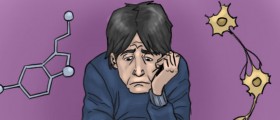
People suffering from excessive daytime sleepiness, sleep paralysis, hypnagogic hallucinations and cataplexy are diagnosed with narcolepsy. Patients are usually adults. In very rare occasions children may also have all of the above mentioned symptoms as well.
Patients may suffer from this condition for a long period of time, without being diagnosed. In some cases, there was over 10 years of time between initial symptoms and final diagnosis of narcolepsy. This problem can start in teenage years, as some 50% of all narcolepsy patients have reported. Narcolepsy can cause problems in the academic and social field and many people suffering from this condition don’t perform as well as they should according to their intellectual abilities.
This condition can be treated and this includes different approaches to achieve best results.Who Can Suffer from Narcolepsy?
In the United States, there are about 0.02 to 0.18% chances that someone will suffer from narcolepsy. Caucasians living in Southern California are discovered to have about 0.07% chances to develop this disease, Northern Californians about 0.05%, while people of black descent have 0.02% chances for this condition.
Relatives of the people who already have narcolepsy are at 10 to 40 times greater risk to develop this condition.
Causes of Narcolepsy
There are several factors considered to contribute to development of narcolepsy, including inheritance, abnormal immune modulation and abnormal functioning and sensitivity of neurotransmitters. Recent studies also included involvement of certain subtypes of human leukocyte antigen (known as HLA) and abnormalities in pontine reticular activating system, leading to abnormalities in synaptic transmission of monoamines.
During the studies, scientists discovered that cholinergic blockade eliminated symptoms in dogs suffering from narcolepsy, while the drug prazosin (antagonist of alpha 1 receptors) worsen the symptoms of this condition in both animal and human subjects.
Additionally, scientists and doctors researching narcolepsy believe that this condition may also be caused by dysfunction or problems with regulation of REM (rapid eye movement) sleep.
HLA subtypes are also suggested to be involved in the mechanism of development of narcolepsy. Because of this fact, scientists speculate if narcolepsy is actually an autoimmune disease. There are some 12 to 35% of people all over the world carrying the gene for narcolepsy, but the incidence of the disease is only 0.02 to 0.18%.
Hypocretin system is also considered to be important for the development of narcolepsy in humans. People who have been proven to suffer from irregular narcolepsy have been discovered to have low cerebrospinal fluid (CSF) hypocretin as well as low CSF histamine levels. Current scientific theory about the cause of narcolepsy includes the susceptibility and selective loss of hypocretin neurons. Genetics and environmental factors are considered to affect the destruction of hypocretin neurons. Over the time, amount of these neurons decrease and once their number reaches certain lower limit patients experience symptoms of narcolepsy.

















Your thoughts on this
Loading...